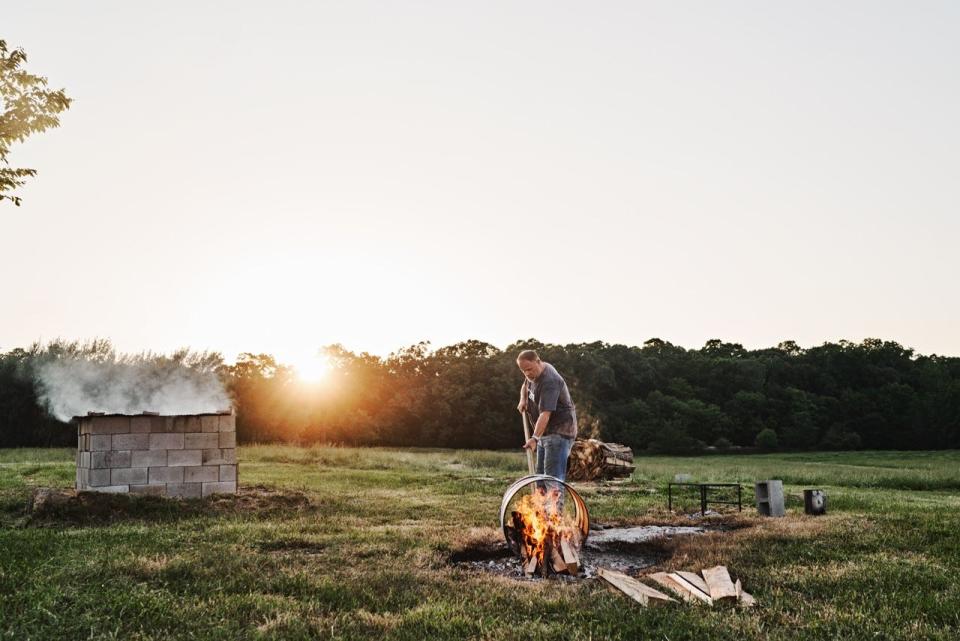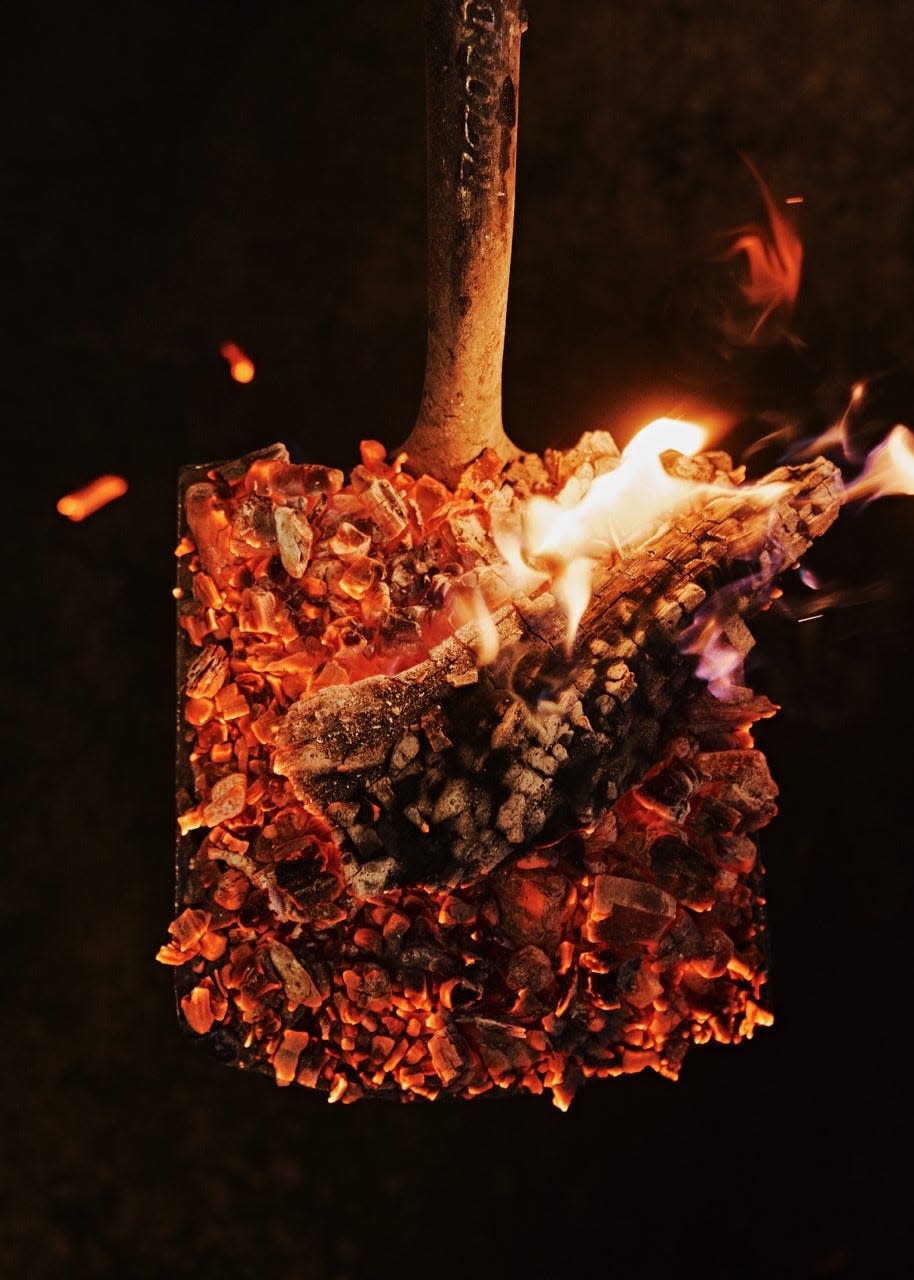Pat Martin promises one thing in new barbecue series: 'Arrogance and ego have no place'
When Nashville-based pitmaster Pat Martin's new series debuts on Outdoor Channel, there will be no big, flashy characters, no gratuitous bragging about barbecue skills, no contests, no cookoffs.
"I said I want this show to be the antithesis of what people think of barbecue on cooking shows, and it is literally the opposite," he said. "There will be no big boisterous characters or egomaniacs. Arrogance and ego have no place on this show, and never will."
Martin's series is called "Life of Fire" after his cookbook of the same name, which covers everything from whole-hog barbecue to charred carrots. Intuitive Content, founded by Andrew Zimmern, produced it.
As with Martin's professional life ― he also owns Martin's Bar-B-Que Joint in four states ― the series showcases the old ways of barbecue, the time-honored traditions that require a consideration of smoke and heat, a well of patience and a deep understanding of technique.
Reviewing 'Life of Fire' on Outdoor Channel
"Life of Fire" revels in the arduous process of cooking over fire. It's like taking the long road for the view and tales told along the way.
The show has no mechanized cooking tools. It unfolds over 10 weekly episodes, each featuring a unique style of live-fire cooking. The uniting thread is perhaps the biggest barbecue tradition: allowing stories to unfurl over slow-burning coals.

"The production team was incredible about editing two days of footage and still getting the message," Martin said. "The show is stylistically conversational and minimally produced by my request."
The message is that much gets lost in automation and not always flavor. A mechanized pellet smoker can still make good barbecue, Martin said.
"But it misses a lot of the methods and cultures that get passed down when you're sitting around a fire," he added. "It completely misses the romanticism of burning down coals and cooking something over them."
Martin: Food cooking started over fire
Nearly all cultures can trace their food traditions to live fire, Martin explains in the opening moments of episode 108, in which he travels to Minnesota to visit Union Hmong Kitchen chef Yia Vang.
Together, the two break cold ground to pit-roast a pig head. Vang shows Martin how to make Hmong-style purple sticky rice, a technique that connects him to his culture.
"With my mom growing up it wasn't about a recipe, it was about a relationship," Vang said, his hands in the rice. "We would stand shoulder to shoulder with mom, and she would literally take my hand and put it in there, and she made sure I understood what it felt like. Every kernel of rice that gets under my fingers, you have to activate it, get all that starch out and pour it out, do it again, and do it until the water was clear."

The need for immediacy has become a symbol of disconnection and, in some ways, its cause. It's a theme that resurfaces often in "Life of Fire."
"A lot of our society is so fast now, there's so much technology, and barbecue hasn't been able to escape that either," Martin said.
Underscoring that is the pilot episode, which centers around Martin and his journey to learning West Tennessee whole hog barbecue, a technique enduring among only a few pitmasters in the state.
It starts with extra large hogs, which can weigh more than 300 pounds in the field. Martin said the old-timers call them "sausage hogs." Western Tennessee pitmasters employ particularly low temperatures, around 195 degrees compared to 250 or hotter in the Carolinas.

Also unlike in the Carolinas, the skin becomes a cooking vessel for the pork, which essentially confits in its own rendered fat.
It's a painstaking process, but that's not why more pitmasters have left it behind. It also makes terrible economic sense, with as little as a 30% yield of sellable meat on a whole hog, according to Martin. It's the complexity of the cook that scares off most.
"It's a skill; you're cooking a whole body. You've got a shoulder, hams, lots of parts at different sizes and densities that cook at different speeds," he said. "It just takes time to learn how to do that."
Showcasing that tradition, and what happens when its masters gather to honor it, set the tone and the pace for the entire season.
"I take the viewer with me," Marton said. "We really got into it and talked about what it used to be, how it's dying off, all of those things."
The show became a vehicle to showcase what Martin learned in the past 20 years, perhaps most importantly what can be forged over food and flame.
"We're humans," he said. "We came from fire."
How to watch Pat Martin's 'Life of Fire'
“Life of Fire” is a new series on Outdoor Channel, premiering May 6, at 8 p.m. and continuing in for 10 total episodes. You can watch the Outdoor Channel on cable and satellite providers, or on streaming services such as Sling, Hulu Live TV or YouTubeTV.
This article originally appeared on Nashville Tennessean: Nashville pitmaster Pat Martin hosts Outdoor Channel series

